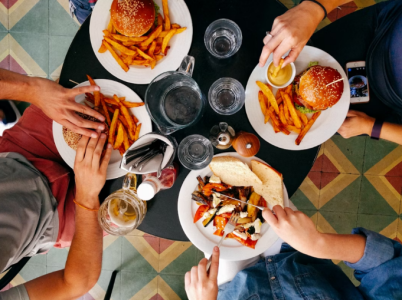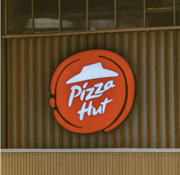Eating out frustrations grow: What’s driving diners away from restaurants?
- Replies 0
Dining out was once considered a simple treat, but for many Americans, the experience is becoming more complicated.
A new survey suggests customers are losing patience with everything from rude service to sticky menus.
The smallest details now carry heavy weight as people choose carefully where to spend their money. Expectations are rising, and restaurants are under sharper scrutiny than before.
In the Lightspeed Commerce survey of 1,000 diners, 30% said they have left a restaurant before ordering because of long waits.
Another 20% admitted they walked out after dealing with rude staff. Even cleanliness plays a deciding role, with 24% saying sticky menus or tables are enough to keep them away for good.
“Customers are looking to feel valued the moment they walk through the door," said Adoniram Sides, senior vice president of hospitality at Lightspeed.
Sides explained that service quality matters even more during a time of inflation, when meals out feel like a luxury rather than a routine.
“If a customer goes to a restaurant and finds a sticky menu or table, they're going to get turned off,” he said. He compared a stained or grimy menu to a warning sign that raises questions about the kitchen’s cleanliness. “Like, is the kitchen clean?” he asked, underscoring how visible details can shape trust.
Seattle resident Paul Kiely, 64, describes himself as a foodie who appreciates both small mom-and-pop restaurants and fine dining.
He said he gives more grace to local eateries but still sees cleanliness as a reflection of what happens behind the kitchen doors.
“If you're not paying attention to the little details that the customers is experiencing inside the restaurant and you've got food on chairs and sticky menus, then yeah, I think you have to extrapolate from that and maybe the situation behind the kitchen doors is not all you would hope it to be,” Kiely said. He added that sloppy presentation can be a signal of bigger issues.
Also read: Customers are furious: Find out what Dunkin’ just changed on their menu!
Rude service was ranked the most significant dealbreaker in the study, with 40% of respondents saying it would stop them from returning.
Other major frustrations include cold food, which 35% flagged, and long wait times, which 27% highlighted. Kiely said he would not leave in the middle of a meal but would quietly avoid going back in the future.
“If it is rude service in the order of 'I'm going to argue with you about something at the table,' then yeah, I would be inclined to never go back,” he said.
Another factor creating tension is tipping, with 54% of diners saying they feel pressured by preset tipping screens, up from 47% the previous year. Nearly half admitted they are now tipping less than before, and 29% said they would prefer to get rid of tipping altogether.
Still, 59% said tipping delivery drivers is important, though only 33% felt the same about coffee shop staff. The study also found the most common tip for strong service remains between 15% and 20%.
Solo dining is also on the rise, with 55% saying they now ask for a table for one. Some see it as an act of self-care, while others use it to explore restaurants before bringing friends or dates.
“Solo dining has really become mainstream,” Sides said, noting it is no longer seen as unusual or awkward. More Americans are embracing the trend as part of intentional dining choices.
An unexpected habit is also emerging: adults ordering from kids’ menus. Forty-four percent said they do this for smaller portions, simpler meals, or lower prices.
Also read: The future is now: Discover how Kroger's latest robot workers could affect job security
Sides suggested that rising use of weight-loss drugs like Ozempic may be influencing the desire for less food. “That to me is fascinating,” he said, adding that portion control and cost are both key drivers.
With more people cutting back on spending, diners insist that if they are going to pay for a restaurant meal, it needs to be worth it.
“Consumers feel like if they're going to spend money, especially to go out and sit down and have a meal, the experience has to be good,” Sides explained.
He added that customers no longer feel they have disposable income to waste on poor service. For many, the basic details can now make or break the choice to return.
Read next: Exposed! Find out which restaurant chains are ruining your dining experience with poor service

Do you think restaurants are failing to deliver on the basics, or are customers expecting too much during difficult times? Would sticky menus or pushy tipping screens be enough to keep you from returning to a place? Share your thoughts and let us know what you believe makes or breaks a good dining experience today.
A new survey suggests customers are losing patience with everything from rude service to sticky menus.
The smallest details now carry heavy weight as people choose carefully where to spend their money. Expectations are rising, and restaurants are under sharper scrutiny than before.
In the Lightspeed Commerce survey of 1,000 diners, 30% said they have left a restaurant before ordering because of long waits.
Another 20% admitted they walked out after dealing with rude staff. Even cleanliness plays a deciding role, with 24% saying sticky menus or tables are enough to keep them away for good.
“Customers are looking to feel valued the moment they walk through the door," said Adoniram Sides, senior vice president of hospitality at Lightspeed.
Sides explained that service quality matters even more during a time of inflation, when meals out feel like a luxury rather than a routine.
“If a customer goes to a restaurant and finds a sticky menu or table, they're going to get turned off,” he said. He compared a stained or grimy menu to a warning sign that raises questions about the kitchen’s cleanliness. “Like, is the kitchen clean?” he asked, underscoring how visible details can shape trust.
Seattle resident Paul Kiely, 64, describes himself as a foodie who appreciates both small mom-and-pop restaurants and fine dining.
He said he gives more grace to local eateries but still sees cleanliness as a reflection of what happens behind the kitchen doors.
“If you're not paying attention to the little details that the customers is experiencing inside the restaurant and you've got food on chairs and sticky menus, then yeah, I think you have to extrapolate from that and maybe the situation behind the kitchen doors is not all you would hope it to be,” Kiely said. He added that sloppy presentation can be a signal of bigger issues.
Also read: Customers are furious: Find out what Dunkin’ just changed on their menu!
Rude service was ranked the most significant dealbreaker in the study, with 40% of respondents saying it would stop them from returning.
Other major frustrations include cold food, which 35% flagged, and long wait times, which 27% highlighted. Kiely said he would not leave in the middle of a meal but would quietly avoid going back in the future.
“If it is rude service in the order of 'I'm going to argue with you about something at the table,' then yeah, I would be inclined to never go back,” he said.
Another factor creating tension is tipping, with 54% of diners saying they feel pressured by preset tipping screens, up from 47% the previous year. Nearly half admitted they are now tipping less than before, and 29% said they would prefer to get rid of tipping altogether.
Still, 59% said tipping delivery drivers is important, though only 33% felt the same about coffee shop staff. The study also found the most common tip for strong service remains between 15% and 20%.
Solo dining is also on the rise, with 55% saying they now ask for a table for one. Some see it as an act of self-care, while others use it to explore restaurants before bringing friends or dates.
“Solo dining has really become mainstream,” Sides said, noting it is no longer seen as unusual or awkward. More Americans are embracing the trend as part of intentional dining choices.
An unexpected habit is also emerging: adults ordering from kids’ menus. Forty-four percent said they do this for smaller portions, simpler meals, or lower prices.
Also read: The future is now: Discover how Kroger's latest robot workers could affect job security
Sides suggested that rising use of weight-loss drugs like Ozempic may be influencing the desire for less food. “That to me is fascinating,” he said, adding that portion control and cost are both key drivers.
With more people cutting back on spending, diners insist that if they are going to pay for a restaurant meal, it needs to be worth it.
“Consumers feel like if they're going to spend money, especially to go out and sit down and have a meal, the experience has to be good,” Sides explained.
He added that customers no longer feel they have disposable income to waste on poor service. For many, the basic details can now make or break the choice to return.
Read next: Exposed! Find out which restaurant chains are ruining your dining experience with poor service
Key Takeaways
- Customers are looking to feel valued the moment they walk through the door.
- If a customer goes to a restaurant and finds a sticky menu or table, they're going to get turned off.
- If it is rude service in the order of 'I'm going to argue with you about something at the table,' then yeah, I would be inclined to never go back.
- Consumers feel like if they're going to spend money, especially to go out and sit down and have a meal, the experience has to be good.
Last edited:







